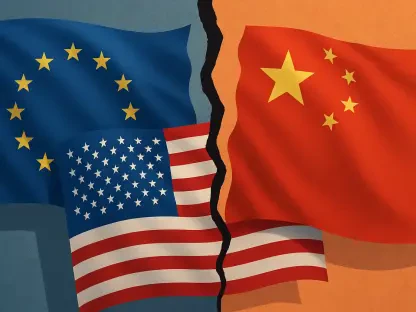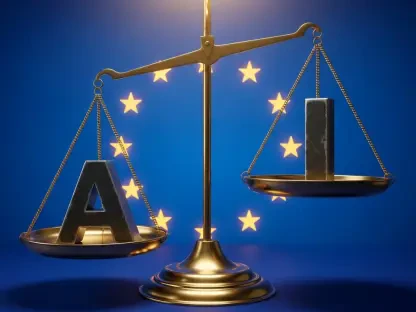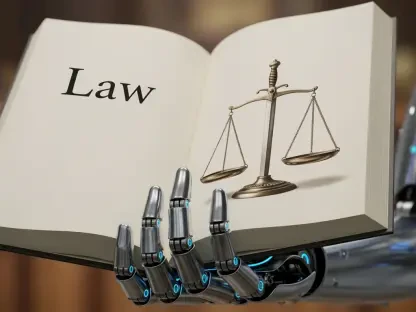In today’s interview, we’re delving into the intricate ways the Trump administration utilized the Supreme Court’s emergency docket to shape immigration policy. Desiree Sainthrope, a legal expert renowned for her extensive experience in drafting and analyzing international trade agreements, will provide her insights. With a deep understanding of global compliance and the evolving implications of technologies like AI, Desiree sheds light on the interplay between judicial oversight and executive power in the context of immigration.
What are your thoughts on the overall impact of the Trump administration’s use of the Supreme Court’s emergency docket for immigration cases?
The Trump administration’s use of the Supreme Court’s emergency docket for immigration cases certainly shifted the traditional pace and depth of judicial review. This strategy reflects a more rapid approach to implementing significant policy changes before they could be fully contested or debated. It underscores a concerted effort to leverage the immediacy of judicial intervention to secure policy objectives swiftly, often creating a legal environment wherein substantial changes can happen with limited scrutiny. This practice, in many ways, paved a path for other administrations to consider similar approaches when facing contentious issues.
Could you explain how the emergency docket played into the Trump administration’s legal strategy on immigration?
The emergency docket was central to the Trump administration’s legal strategy on immigration by allowing it to seek immediate judicial relief to enforce controversial policies swiftly. This approach minimized the traditional layers of judicial review, enabling quicker policy enforcement with potentially significant impacts on thousands of individuals. The administration, aware of the contentious nature of its immigration policies, thus utilized this mechanism to sidestep longer, more detailed legal battles that might arise in lower courts. This indicates a strategic shift towards making quick policy gains that might withstand initial challenges before facing more comprehensive scrutiny.
What significance does the fast pace and limited briefing of the emergency docket have on immigration cases?
The fast pace and limited briefing of the emergency docket significantly pressure both the petitioners and the justices. This environment often results in decisions that are made without the comprehensive argumentation typically afforded by full hearings. For immigration cases, this can lead to critical decisions impacting people’s lives being made in a less exhaustive legal context, which may affect the judicial quality and thoroughness. The hastiness can undermine public and legal understanding and diminish the predictability of law, which is a cornerstone of a stable legal system.
How do you think the court’s decisions on these cases reflect the administration’s overall approach to immigration policy?
The court’s decisions, predominantly siding with the administration, reflect a broader acceptance of strong executive action in immigration policy during the Trump era. This stance mirrors the administration’s general approach, which favored broad and immediate changes to what it considered ineffective immigration policies. By endorsing these swift policy shifts, the court’s decisions validated an approach that prioritized speed and efficacy, potentially over thorough judicial deliberation and traditional due process.
Can you detail any specific strategies President Trump is using to reshape immigration policy through these court cases?
President Trump’s strategy involved challenging established norms and leveraging executive orders to drive immigration policy changes, deeply rooted in altering long-standing interpretations of immigration laws. By tapping into the emergency docket, he could quickly address and dismantle policies enacted under previous administrations, such as protections granted through Temporary Protected Status or controversial reinterpretations of amendments. This was a calculated move to realize a broader agenda focused on restricting immigration and redefining national policy through a judicial fast track.
How did the Supreme Court respond to the Trump administration’s attempts to reinterpret the 14th Amendment citizenship clause?
The Supreme Court chose a cautiously narrow approach in response to the Trump administration’s efforts to reinterpret the 14th Amendment’s citizenship clause, particularly around birthright citizenship. While the court ultimately sided with the administration in not issuing universal injunctions, it refrained from ruling directly on the constitutionality of the executive order itself. This leaves the fundamental question of birthright citizenship open for future litigation, indicating the court’s reluctance to make sweeping changes without a more detailed juridical examination.
What are your views on the Supreme Court’s decision to allow the use of third-country removals in the Department of Homeland Security v. D.V.D. case?
The decision to allow third-country removals reflects a broader interpretation of executive power in executing immigration decisions. This outcome indicates a judicial willingness to permit broader policy implementations with significant human impact, potentially at the expense of traditional due process safeguards. It exemplifies the court’s role in granting agency to immigration authorities, suggesting that security and enforcement might be prioritized over individual case examination, which is a noteworthy shift in judicial policy concerning immigration.
Could you explain the role of the dissenting opinions, particularly those by Justices Sotomayor, Kagan, and Jackson, in these cases?
Dissenting opinions by Justices Sotomayor, Kagan, and Jackson play a crucial role in outlining an alternative judicial philosophy focused on individual rights and due process. Their dissents often highlight concerns over procedural deficiencies and uphold a broader interpretation of statutory and constitutional protections. These opinions serve as a counterbalance and underscore the need for rigor and thoroughness in dealing with cases that have far-reaching implications for individuals’ rights and lives.
Why do you think the justices favored the Trump administration in several cases, yet dissented in some key areas?
The justices favored the Trump administration, often reflecting a respect for executive discretion and power, especially in national security and immigration enforcement. However, dissent in key areas points to the complexities and nuances of specific cases where underlying legal principles regarding due process and individual rights are at stake. Such dissents demonstrate the court’s internal struggle to balance respect for executive authority with the safeguarding of rights, revealing the different lenses through which justices view the interplay of law and policy.
How has the court’s decision affected the implementation of certain immigration policies, like Temporary Protected Status?
The court’s decisions have granted a level of judicial endorsement to the administration’s challenging posture against certain immigration protections, such as Temporary Protected Status. By upholding changes in TPS policy, the court has signaled its support for executive flexibility in revisiting and potentially reversing prior immigration commitments. This sets a precedent for future alterations of immigration protections, ensuring they remain subject to change based on current administrative priorities and interpretations.
Could you elaborate on the significance of the court’s questioning of universal injunctions in Trump v. CASA?
The court’s stance on universal injunctions in Trump v. CASA denotes a shift towards limiting lower courts’ reach in nationwide policy implementation blockage. By questioning these injunctions, the Supreme Court emphasized encouraging more tailored judicial approaches that respect boundaries between different branches and courts. This sentiment may prompt a reconsideration of how broad legal challenges can be addressed, thereby influencing how laws are proposed, contested, and ultimately enacted across the judicial landscape.
What potential future impacts do you foresee from the court’s openness to hearing challenges to the administration’s birthright citizenship order?
The Supreme Court’s willingness to entertain future challenges to birthright citizenship orders suggests an evolving space for constitutional discourse in immigration policy. This openness can provoke a larger societal and legal dialogue around constitutional interpretation, potentially producing landmark decisions with long-lasting effects on citizenship rights. Should these challenges advance, they could redefine fundamental principles of nationality and citizenship, impacting not only policy but the lives of future generations.
Given the current legal landscape, what challenges do you anticipate for future immigration policies?
Future immigration policies will likely face challenges rooted in balancing strong executive policies with robust judicial review and statutory interpretation. As immigration remains a polarizing issue, future administrations may grapple with delineating the extent of executive power and its restriction by existing laws. Additionally, political shifts and international pressures will continue to shape the domestic legal climate, necessitating adaptable and comprehensive approaches that respect the delicate equilibrium of national and individual interests.
Do you believe the emergency docket will continue to be influential in future immigration legal disputes?
The emergency docket’s utility in swiftly processing urgent legal matters will likely persist in influencing future immigration disputes. Its streamlined procedures cater well to administrations seeking immediate implementation of controversial reforms. However, as its use evolves, there may be growing calls for greater transparency and procedural safeguards to ensure that this fast-track mechanism does not erode foundational legal principles and rights. This will be essential in maintaining public trust in the judiciary’s role in facilitating justice.









